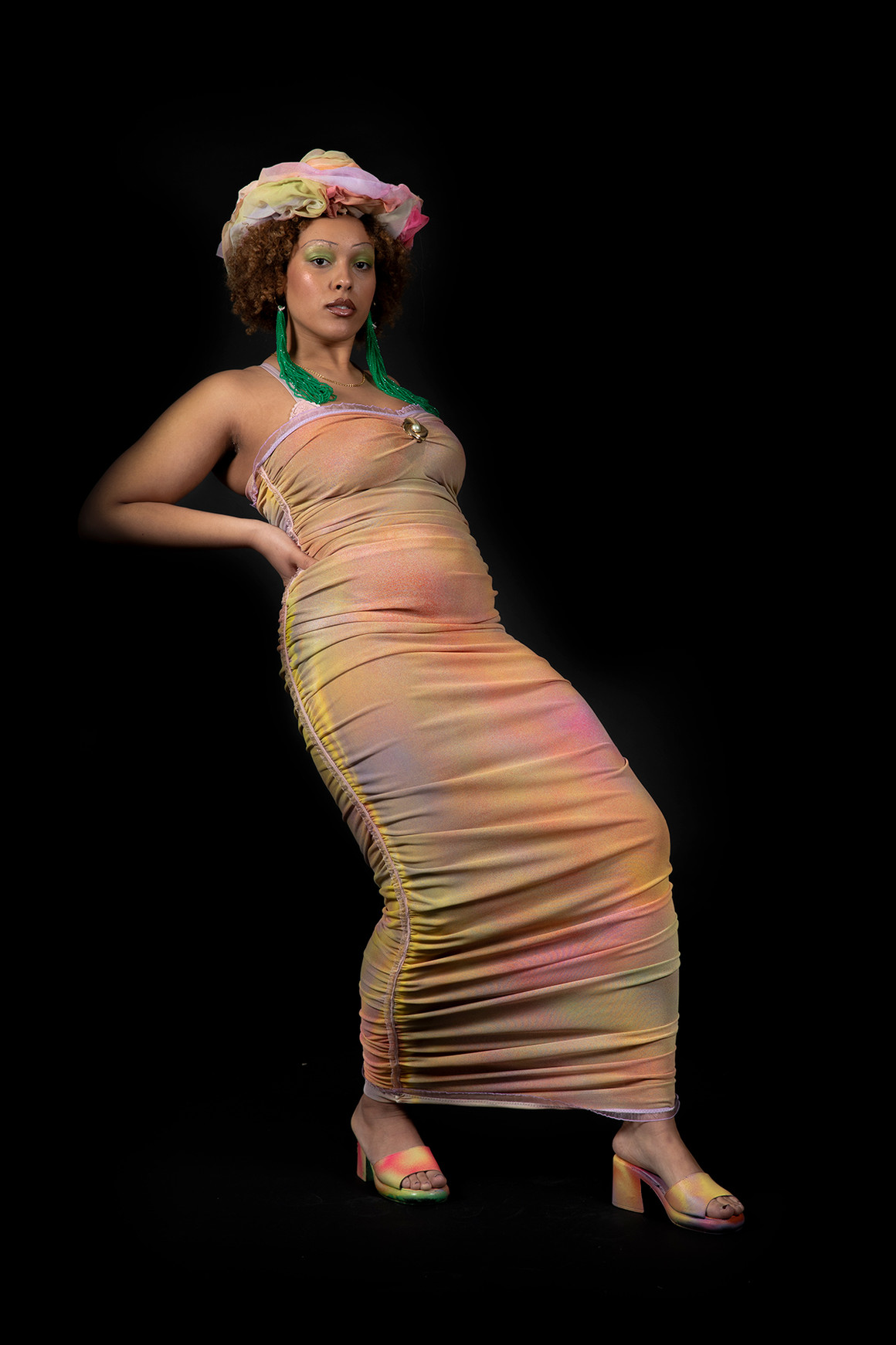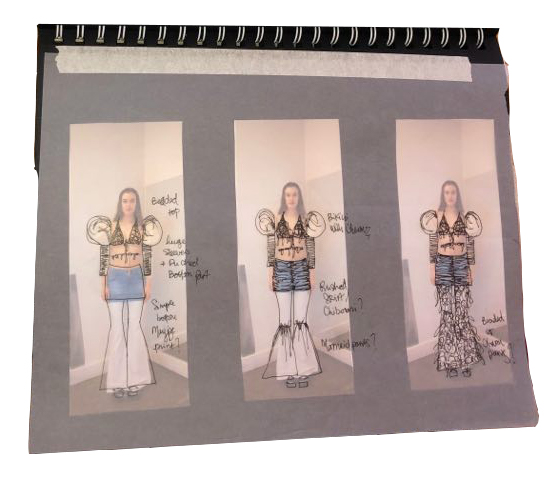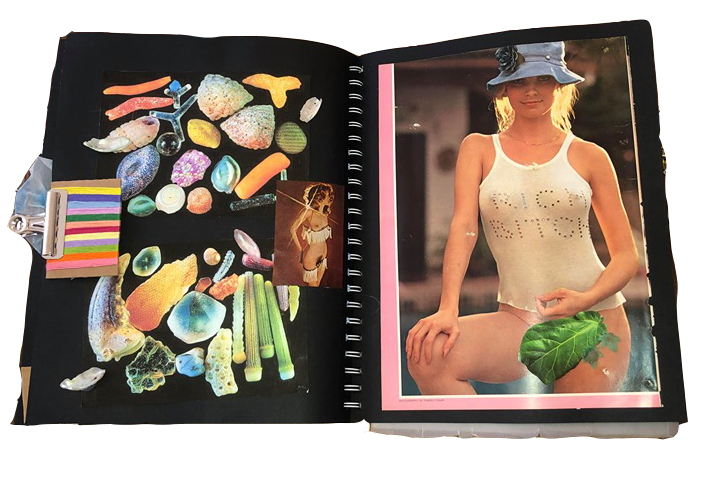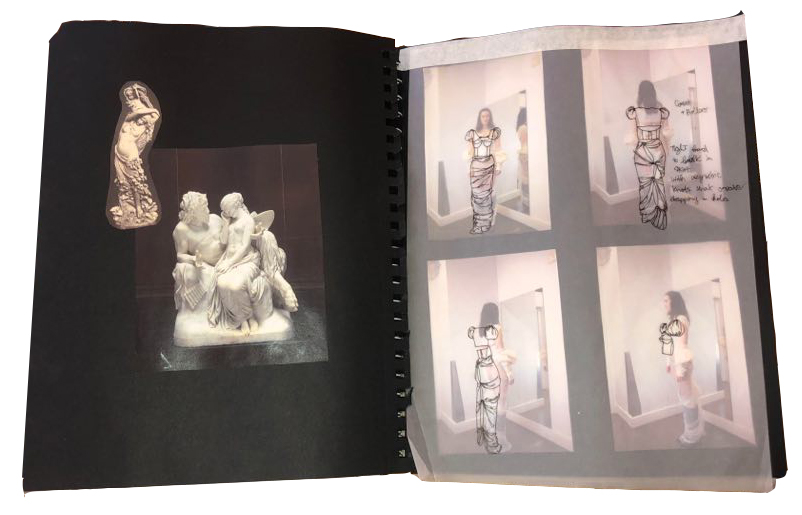Tishanna Carnevale
- Aug 1, 2022
- 6 min read
Updated: Jan 28, 2023
INTERVIEW BY JULIA BEAUPARLANT

Born and raised in Montreal’s Mile End – a popular district, known for its creativity and culture – Tishanna Carnevale, a self-proclaimed citygirl describes it as the perfect work environment. The neighbourhood offers a constant source of inspiration and with its rich and diverse crowd, it brings everything together in a harmonious fashion. “All kinds of people seem to share a sense of care and empathy, on top of a natural open mind. It’s like a utopian bubble…close to what a society should look like,” she says. The young creative grew up with her father’s strong work ethic, her mother’s creative influence but most importantly, their complete support. Much like Tishanna’s playful approach to styling, these disparate elements work together, bringing an appreciation of assembling the extraordinary - she’s not afraid of playing with colour combinations and contrasting patterns.
In 2014, Tishanna started her 3-year Fashion Marketing program at Cégep Marie-Victorin. To strengthen her skills in design, she then went on to pursue an intensive 6-month course in sewing. From there, Tishanna focused on styling and grew her portfolio for about a year until joining ESM. “When starting the program, I was familiar with my aesthetic because of the styling years. This experience was a very accessible way to explore my interest in fashion, as you just curate different things and assemble them. So when I joined ESM, I knew what I liked but I couldn’t properly explain the connections between my inspirations,” she adds.
In her first-year collection, Tishanna explored this fluid perception of reality and made sure to render it in a bold and optimistic perspective. The exuberant looks were designed to fit her overstimulating fantasy world. She aimed to arouse joyful feelings by gathering vivid colours that were inspired by hallucinatory visuals, mixed with her appreciation of the blooming urban gardens around her. The emphasis hourglass silhouettes are meant to celebrate the fake, as a response to the current ideal body image.
While creating in an academic context, Tishanna was able to pull inspiration from existing literature, reading Susan Sontags' Camp literature from 1964 allowed insight into her personal growth and understanding as an artist. “It allowed me to truly better understand myself and changed my perception. I read "Notes on Camp" and it was my personality explained in 11 pages. Especially at our age, we constantly try to become our ideal self, the version we idealize and aim to become. We stick to some personality traits and we try to adopt others. So as a result, we are partly genuine and partly fake. You become your persona…but you have to play,” she explains. From her point of view, this is where self-objectification happens, and in her eyes, it isn't a bad thing. She argues that once someone decides on the product they want to be, “They should use the projection of their image as strength and take ownership of specific characteristics.” From there, she stuck to the idea of Beingas- Playing-a-Role.
Subsequently, Tishanna joins this idea to the postmodern Hyperreality of Jean Baudrillard. “We live in a simulation through social media. We fabricate entire identities and common space online. The derivative products of this simulation are based on nothing real,” she says. Once this is acknowledged, embracing artificiality becomes a strength as ultimately, we become simulacra that bring us closer to our ideal self.
Tishanna rejects the constructs of a mutual exclusiveness between sexuality and intelligence—or superficiality and purpose. In her first-year collection, she staged muses who are cleverly moving around the notion of beauty as a form of power. Rather than looking at it as an aesthetic value dependent on the viewers' taste, she grants the muse the ability to play with their appearance in achieving a true projection of themselves. These musings act as an extension of self-projection; thus, a sharp sense of self-awareness is used as a weapon to navigate today’s society dominated by the
power held through the image. Tishanna's designs actively play with the notion of the gaze. Her muses are extravagant, loud and intelligent, they actively lend themselves to a state of observation.
“One of my oldest memories is in kindergarten calling my mom in tears’ cause I didn’t like my outfit,” she says.
From her childhood to her late teenage years, the young creative reflects on being depicted as superficial: “In high school, I was treated like the fun and silly friend, it deeply bothered me,” she adds. In retrospect, she began to notice a profound dichotomy in the act of superficiality based on one's appearance. Nonetheless, this souvenir paves the way for her current obsession to delineate an unapologetic form of femininity reflected in her collections.
In retrospect, Tishanna associates being long called “superficial” to her love of the artifice; that’s how reading Sontag’s publication brought her intrinsic motivation. For now, we could say she’s in the incubating phase of Camp Art, enhancing her sensitivity to develop a more nuanced approach. She wants to bring it to a second or third degree. She says, "if you don’t have the sensitivity, you won’t understand unless you’re extremely kitsch. It’s cool, that’s how you know a product is a niche.”
Tishanna expands this idealized narrative to inanimate objects. “I don’t think being materialistic is a bad thing. I’m super materialistic and I get attached to objects,” she conveys. Looking at the few dozens of vases lined on her bedroom walls, she describes her relation to the functionality of clothes as being complicated. She adds, "Since my internship, I find it slightly irrelevant to produce useless things, but it’s in contradiction with my entire self: I love useless things and I love objects. Just like fashion, and everything else we do." The young fashion design student has been collecting original and thrifted pieces in hopes of achieving fully wearable showpieces for her future collection. Strongly engaged in the social scene, Tishanna explains how going out every week used to nourish her creativity. “I find it so interesting to see people interact between them and analyze how they decide to represent themselves through their clothes, and what they decide to put forward. It can be very particular.”
Naturally, this mutually reinforced relation between the social and her work is a major plus to balance the workflow, considering that living in Montreal comes with the FOMO a sunny day at the park. Now, working from home resonates with blasting the music that would be playing in the clubs to remain motivated. It comes with no surprise that the current lack of social happenings deprives inspiration, as she feels this isolation reflects in her current designs.
Tishanna has come to miss the toxic environment of a pre-pandemic fashion school. Its structure, competition and deadlines are her best conditions to perform. Always seeking honest critiques, she overcomes daily obstacles with the support, insight and fresh perspectives from peers and friends carrying aesthetics she respects. This constant feedback helps her validate and push ideas further daily.
Tishanna notes a certain resistance to share her process with a broader audience, as an oversaturated Instagram feed comes with constant comparison. And that’s where designing took her out of her comfort zone, "I don’t like doing things that aren’t good at the first time, and designing is 100% that. You think you have a revolutionary idea and the next day you see it on IG. Everything is accessible right now, we all have the same collective memory; so nothing is that revolutionary." To counter this feeling, her previous studies within Fashion Marketing have helped her resist this urge, and become more confident in sharing her ideas. "In the last year, I’ve had the chance to work with all the people I idolize since I’m 18, that’s so cool. And that’s what’s nice about here, making connections is easy," she says.
Tishanna translates her daily obsessions into her narrative, by merging clothes, social events and styling, with a sensitivity for the artifice.
" I see my pieces as conversation starters," she says.
For now, Tishanna is completing her internship, in which she’s building patience through the multiple prototypes needed to make something good. After all, is there a better moment to perfect your sewing skills than in a global pandemic? Luckily, Tishanna has yet to produce her graduate collection.






































































































